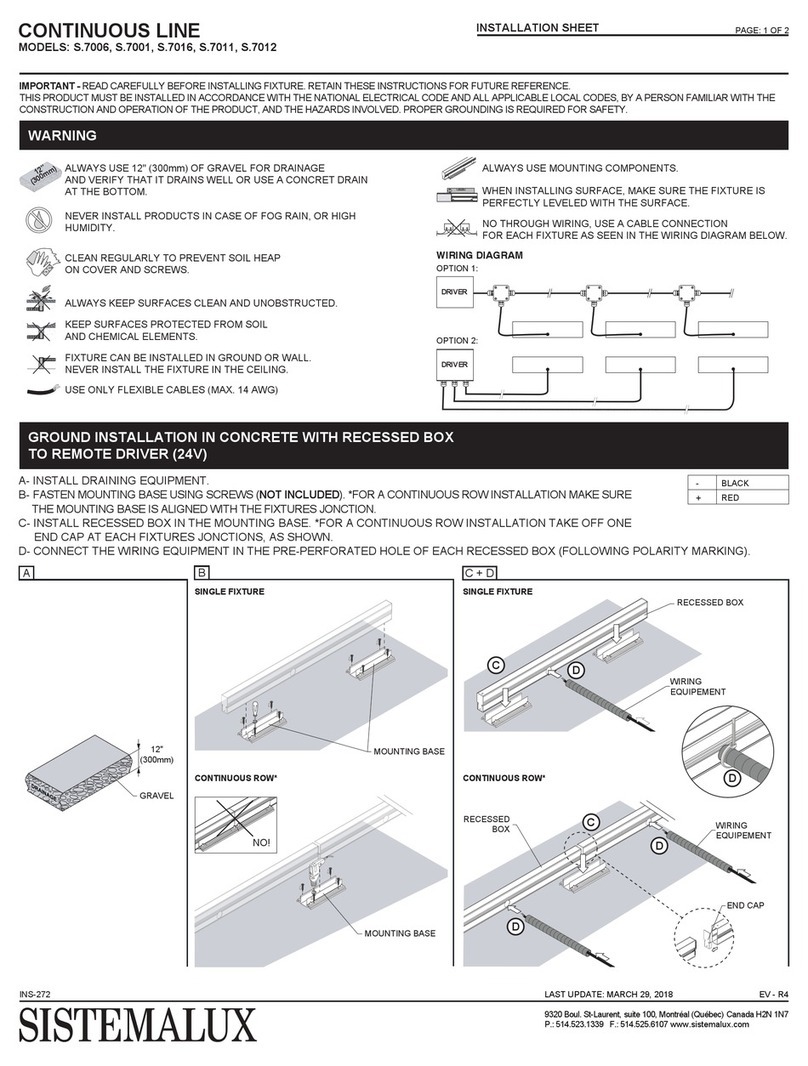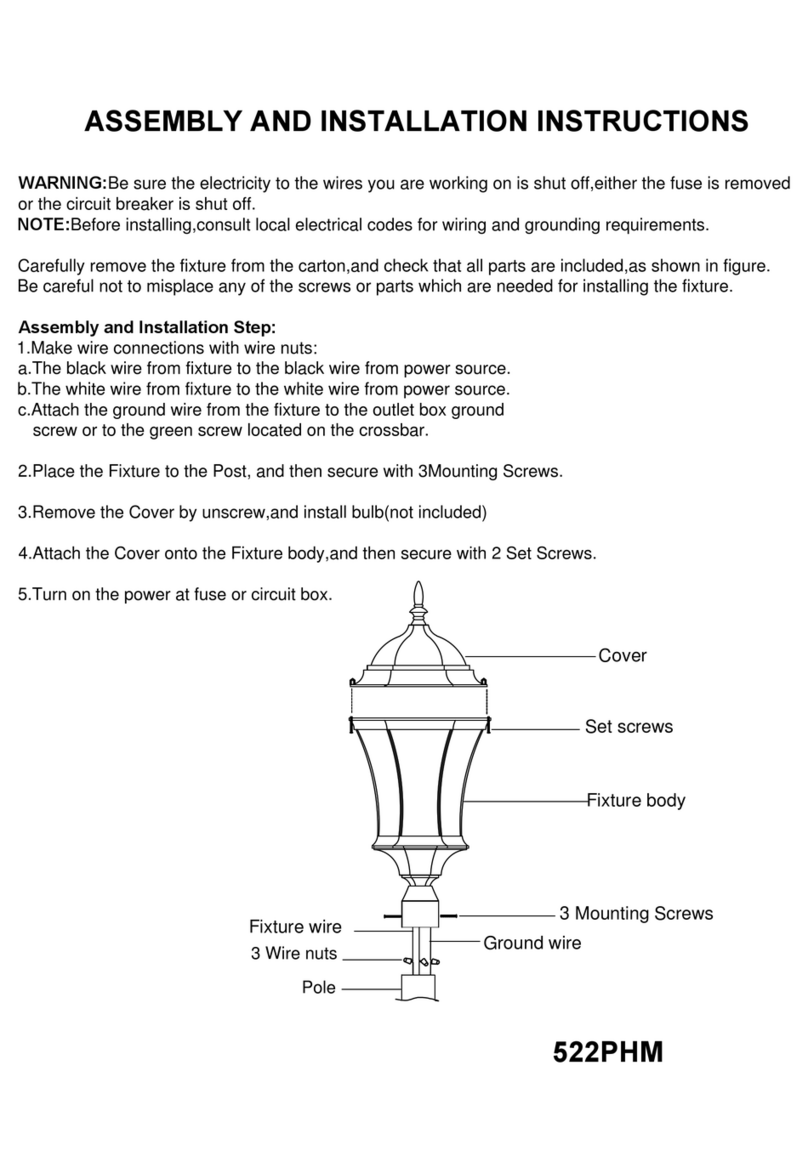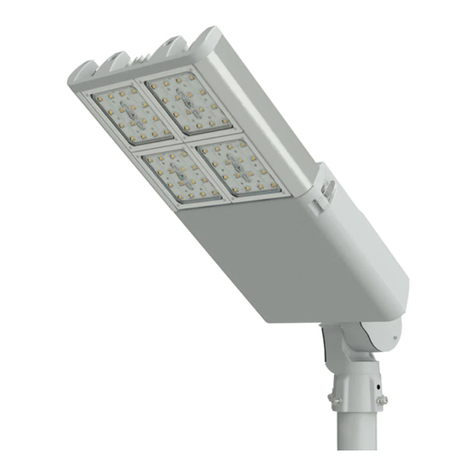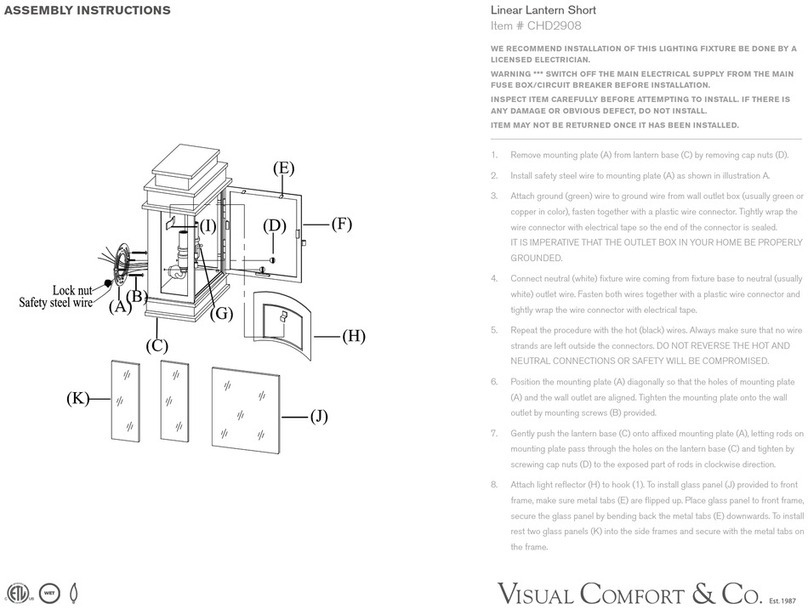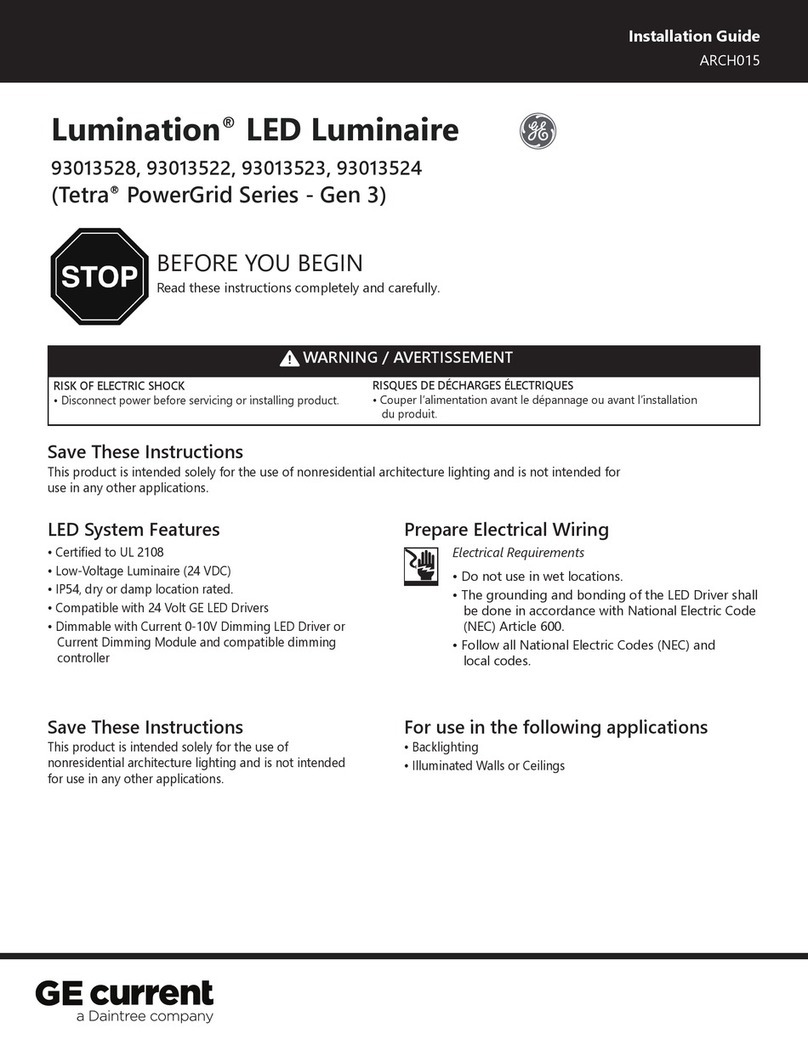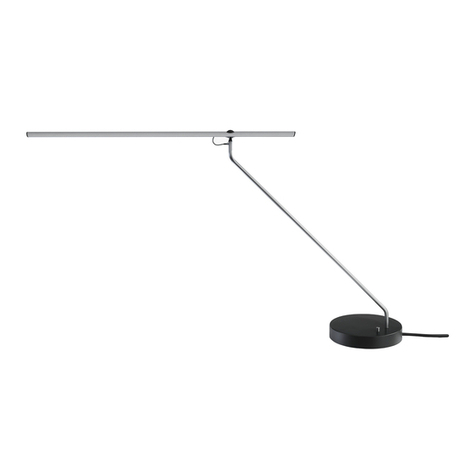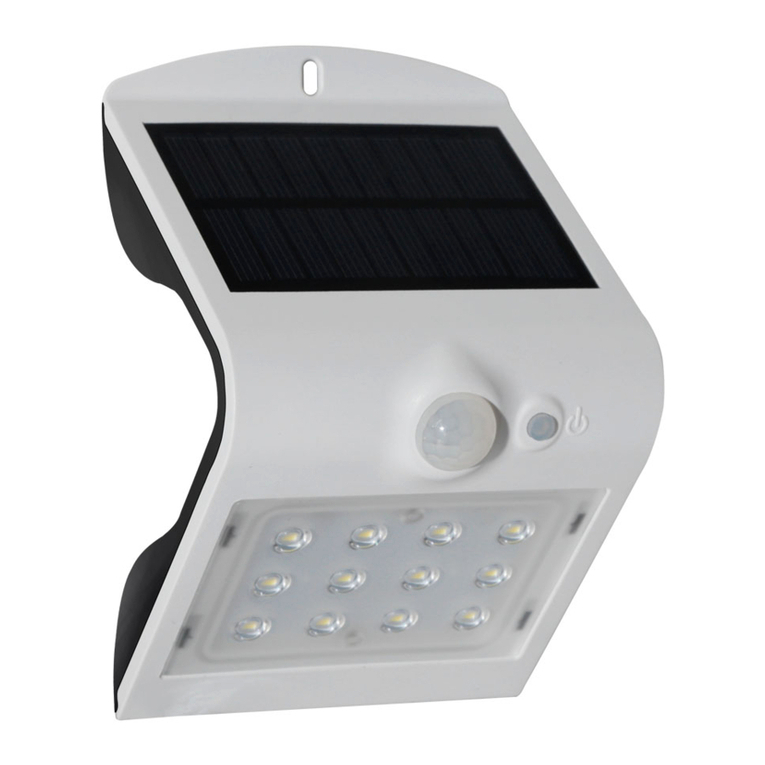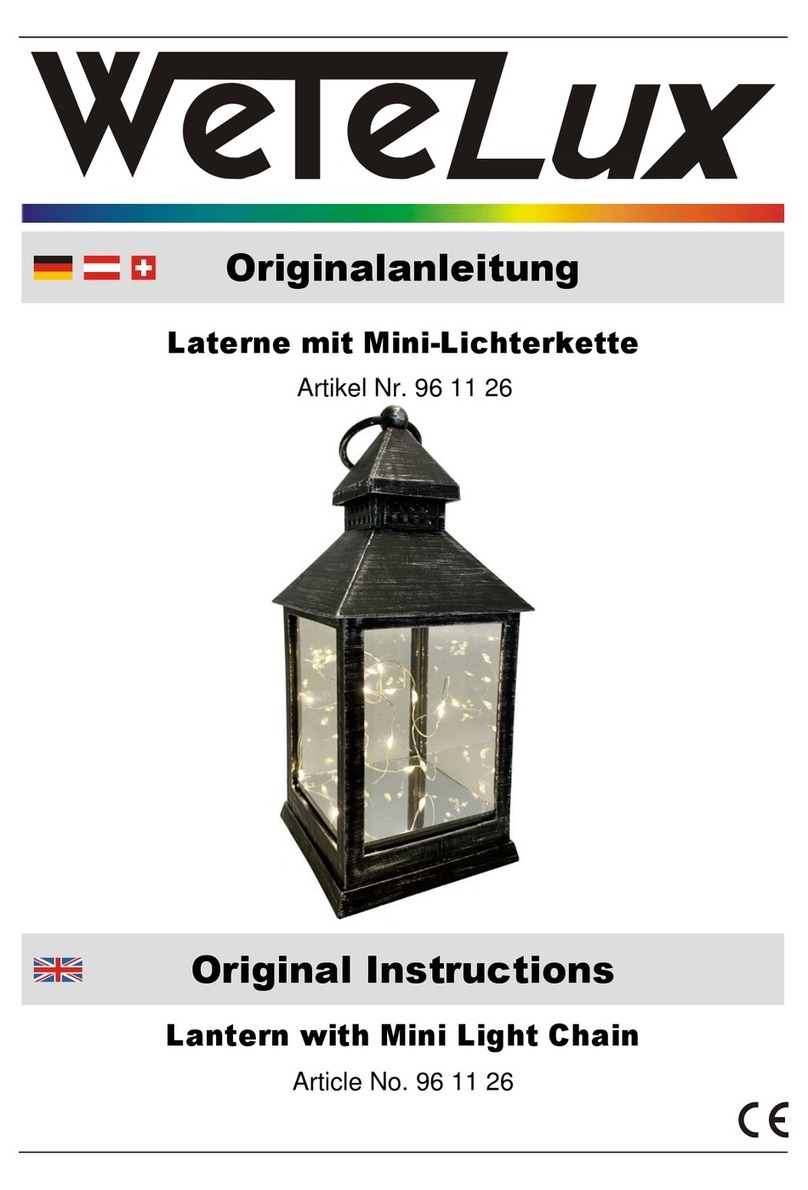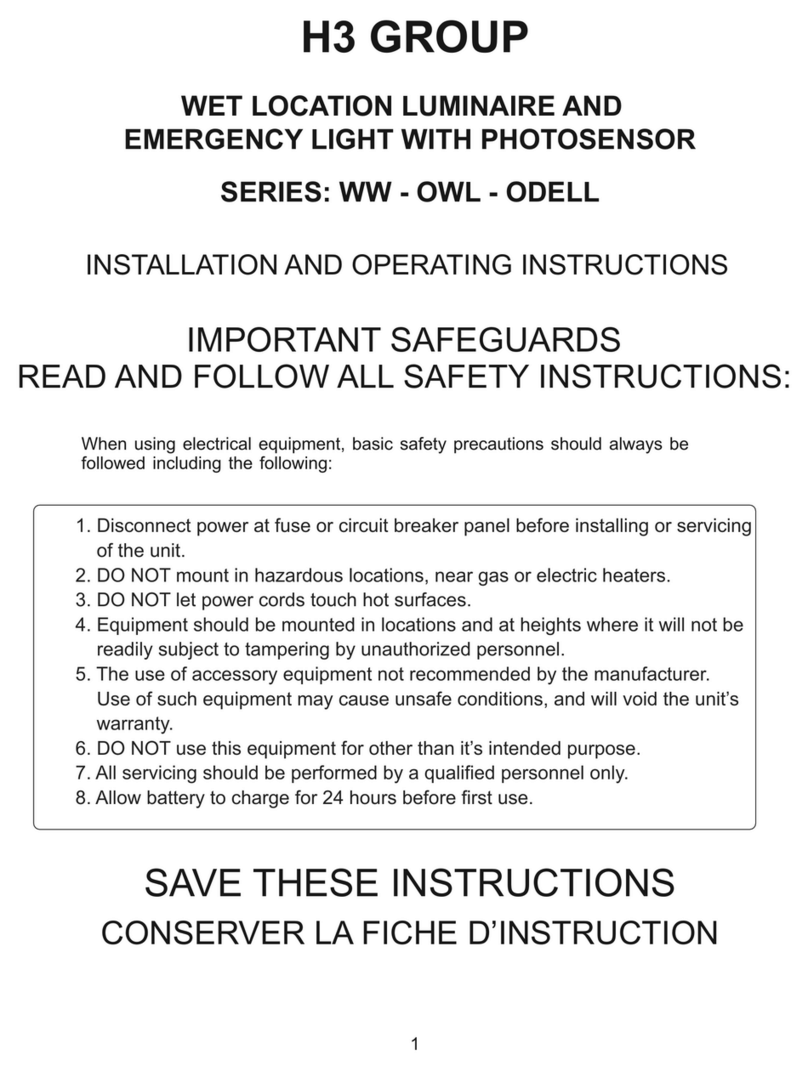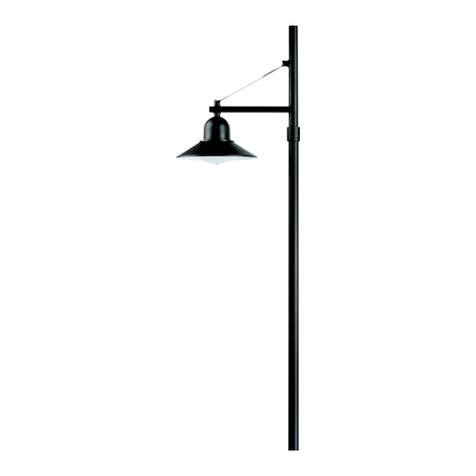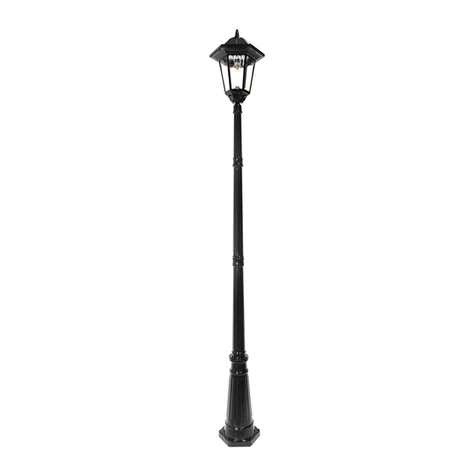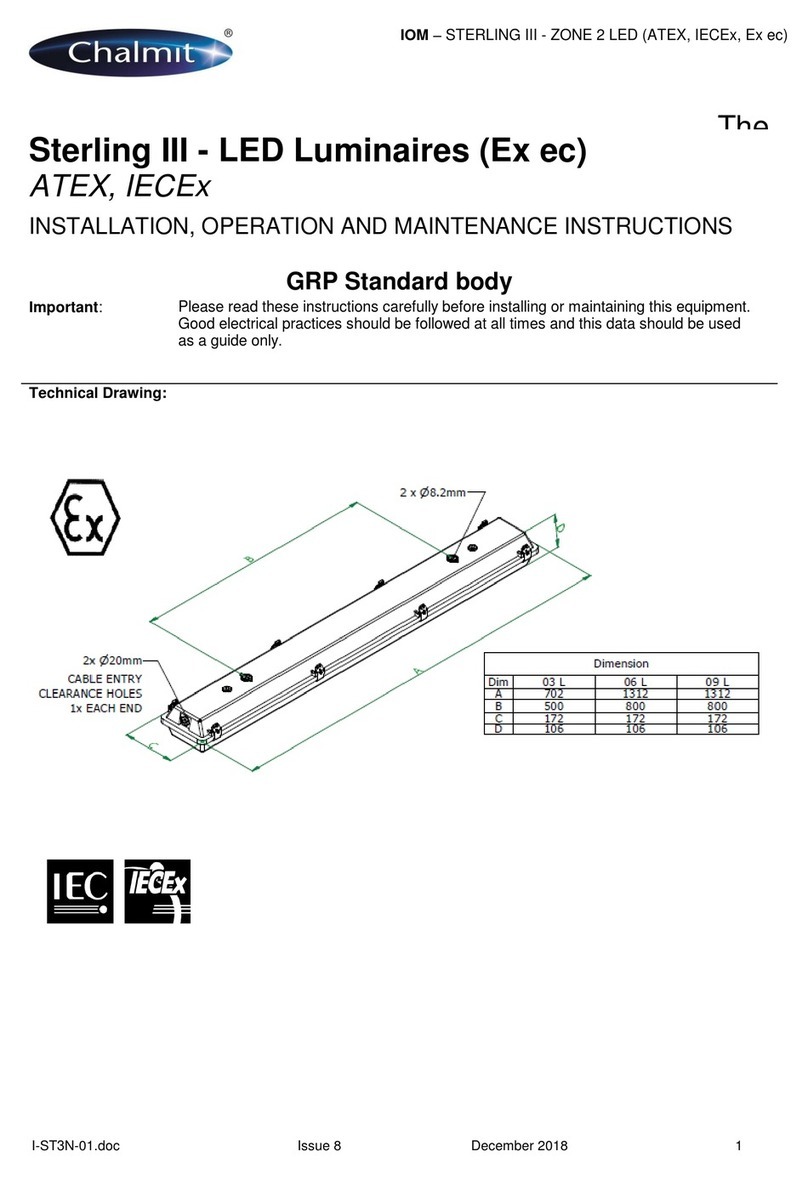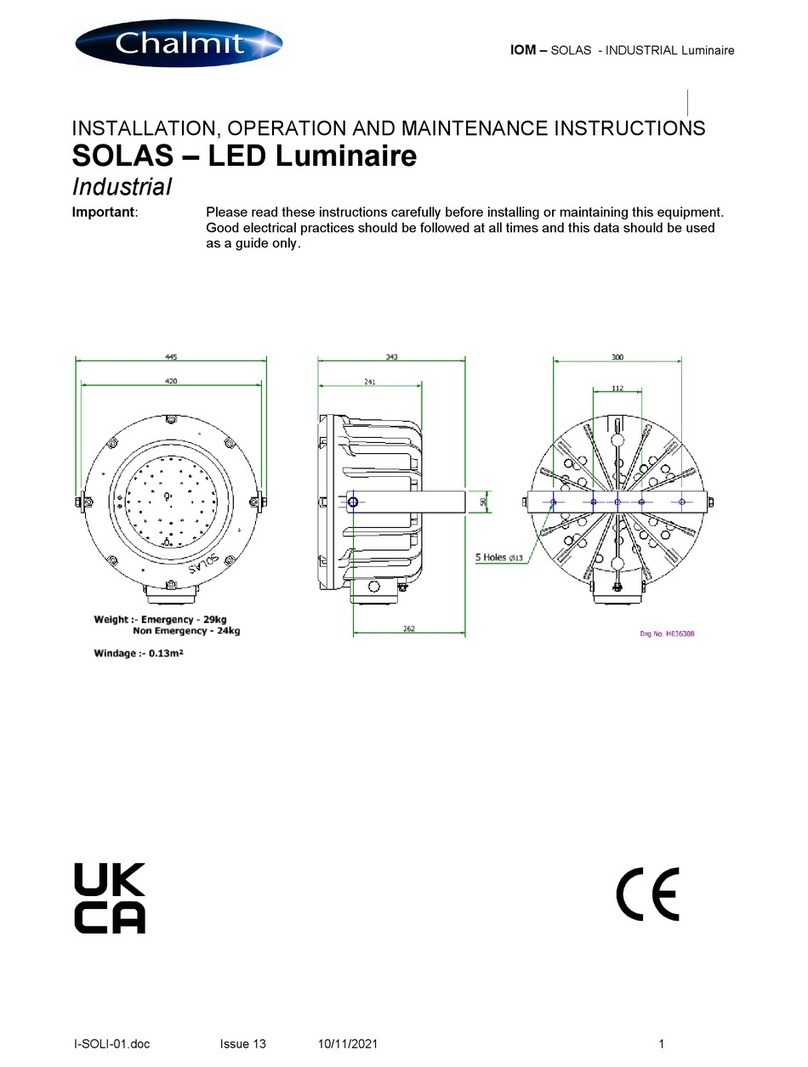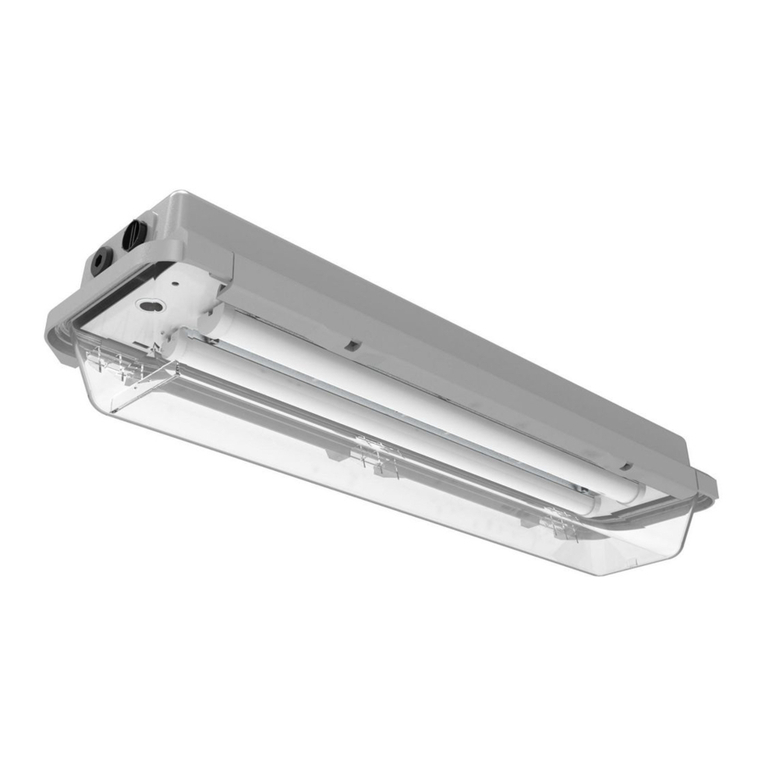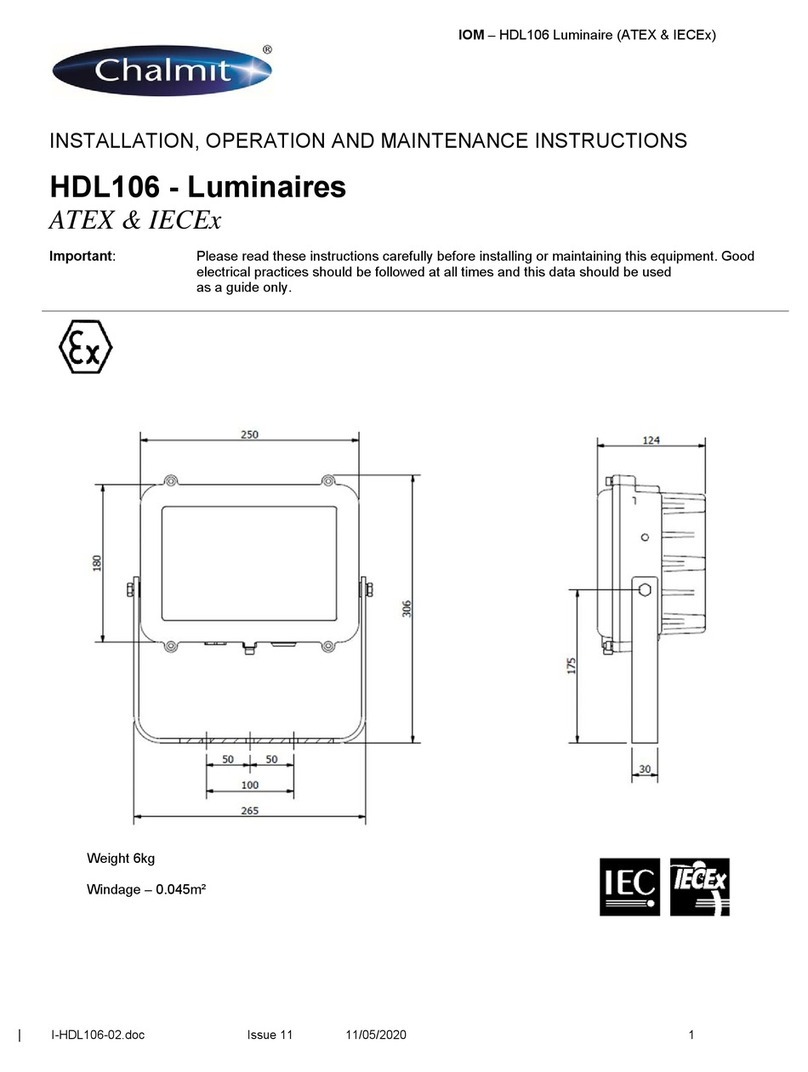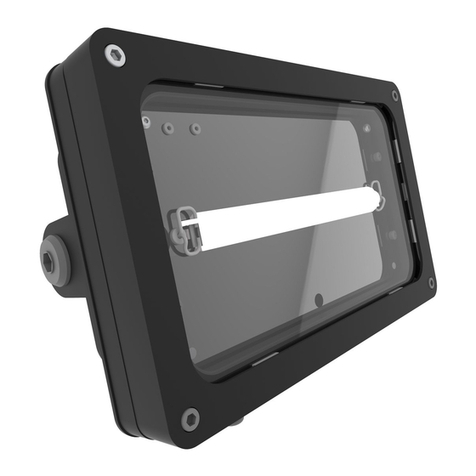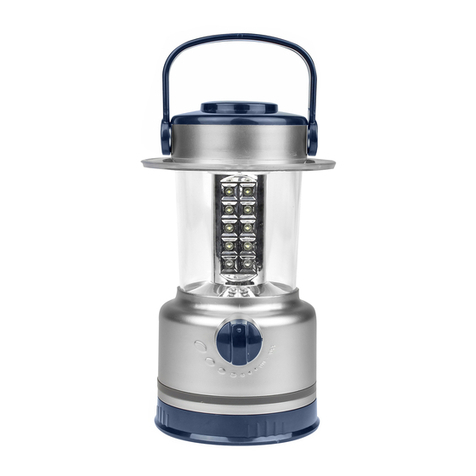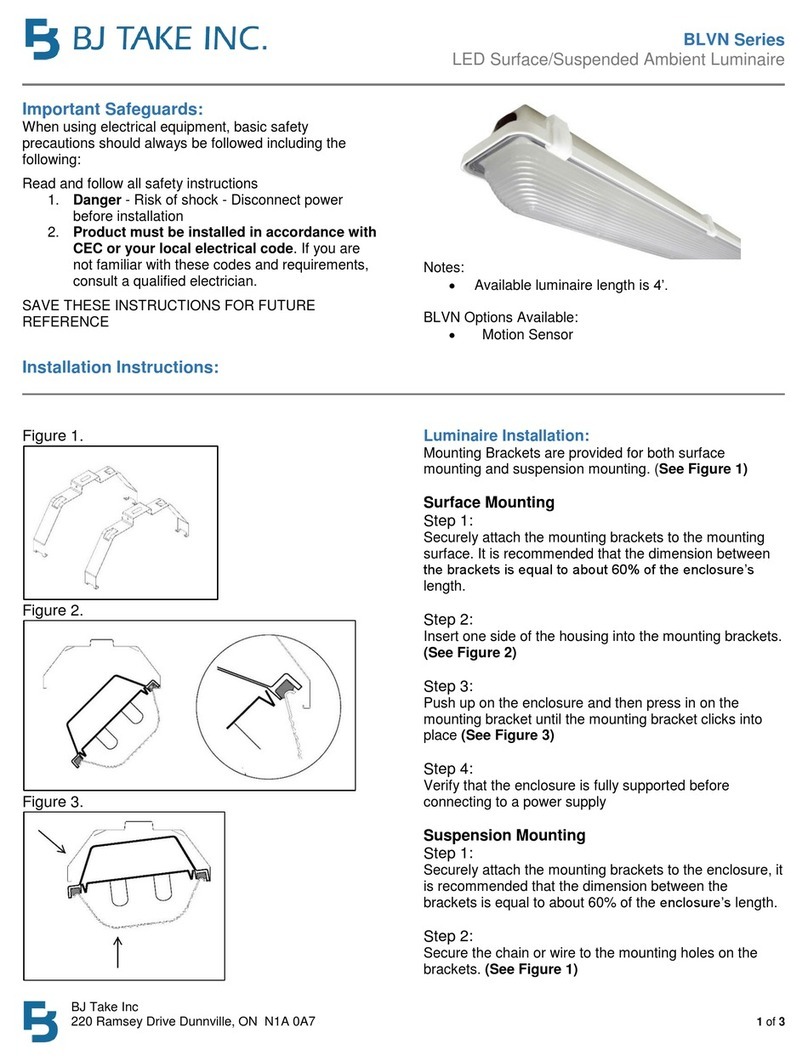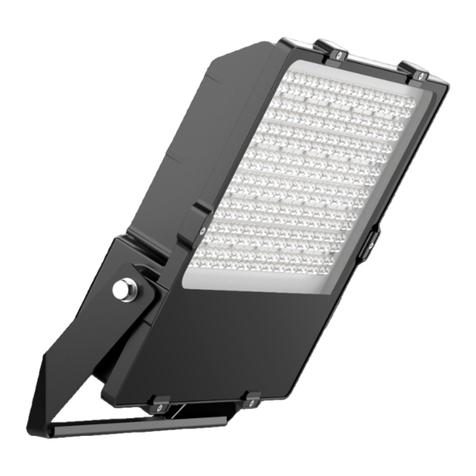
I-PR3I-01.doc Issue 03 18/07/2019 4
IOM – PROTECTA LED (IND)
the clamping bar will begin to open. Insert the tool in the other clamping bar slot and gently lever away from the
diffuser the clamping bar will open and the cover will be retained by the hinge. Should difficulty be experienced
reinsert the tool in the first slot and repeat the procedure.
The procedure for closing and securing the cover is as follows:
Ensure the hinge mechanism is clear of any obstruction and then swing the diffuser into the closed position.
Support the diffuser in position whilst pushing the clamp bar over the edge of the diffuser. Apply even pressure
at both ends of the bar and press the bar over centre.
3.8.2 Removal and Replacement of Clamping Bar (if required)
Open the luminaire as above and remove the diffuser or let it swing down. Press the clamping bar towards the
closed position, tip forward beyond the closed position and the clamping bar will be released from the body. To
replace the clamping bar, put in position on the body with the front edge pointing as far inwards as it will go. Click
the bar outwards and bring back to the normal closed position. The clamping bar should then be secured in
position, open the clamping bar fully by using hand or screwdriver pressure (avoid damaging the gasket), the
clamping bar is then ready to accept the normal closure of the diffuser.
3.8.3 Releasing the LED Tray / Gear Tray
Loosen the four fixing screws retaining the LED / Gear tray and slide over keyhole slots. The tray will hang on the
retaining cords without stressing the wiring between body and tray. Replace in reverse order.
3.8.4 Retro Fitting Lamps to LED’s
Before opening the front cover ensure that the luminaire is isolated from the mains supply. Access for retro fitting
is via the front cover, care is to be taken as there is limited suspension of the cover. Make sure that the correct
ESD protection is taken during LED replacement to avoid electric discharge to the PCB.
3.8.5 Commissioning
Energise the mains and check that LED’s light when the supply is energised.
Emergency luminaires are supplied with the Battery plug/Socket disconnected. Just prior to switching power on,
connect battery plug and socket.
Emergency luminaires will require battery packs to be cycled to obtain the full duration/capacity of the Ni-Cd
battery cells. It is recommended that the unit is charged for a minimum period of 24 hours, then permitted to
discharge via emergency operation (power OFF), and then charged again for a minimum period of 24 hours.
If checking battery duration at this time it may be necessary to repeat the cycle to obtain the full 3 hour duration.
3.8.6 Post Commissioning Storage
It is assumed that during commissioning the battery plug and socket are connected.
If the power is to be removed after commissioning for a period of time, our recommendations, along with
guidance from the battery manufacturer, are:
Up to 6 months – No action required. Mains power can be reapplied during this time and the battery will
accept a charge.
6 to 12 months – Disconnect battery plug and socket to maintain charge in the battery.
Before re-connection of mains power re-connect the battery plug and socket. Mains power can be
reapplied and the battery will accept a charge.
Longer than 12 months – Disconnect battery plug and socket. Approximately every 6 months carry out a
charging/discharging cycle, 24 hours charging followed by 3 hour discharge and another 24 hour charge,
then isolate power and disconnect battery plug & socket. This is to avoid deep discharge of cells, which
is caused by a trickle discharge or by long term storage. This could lead to the cells not accepting a
charge from the inverter or not achieving full expected duration.
If the battery is to be checked separately, it should be charged using a constant current charger at
200/400mA for 30/15 hours for the 4Ah. Discharge measurement is not easy as the current is
proportional to the voltage for resistance loads, so it has to be averaged. Discharge the battery at 1 to
2A and multiply current by time. Do not discharge below 1 volt per cell, which is 5V. The capacity should
be 75% or more of normal.









